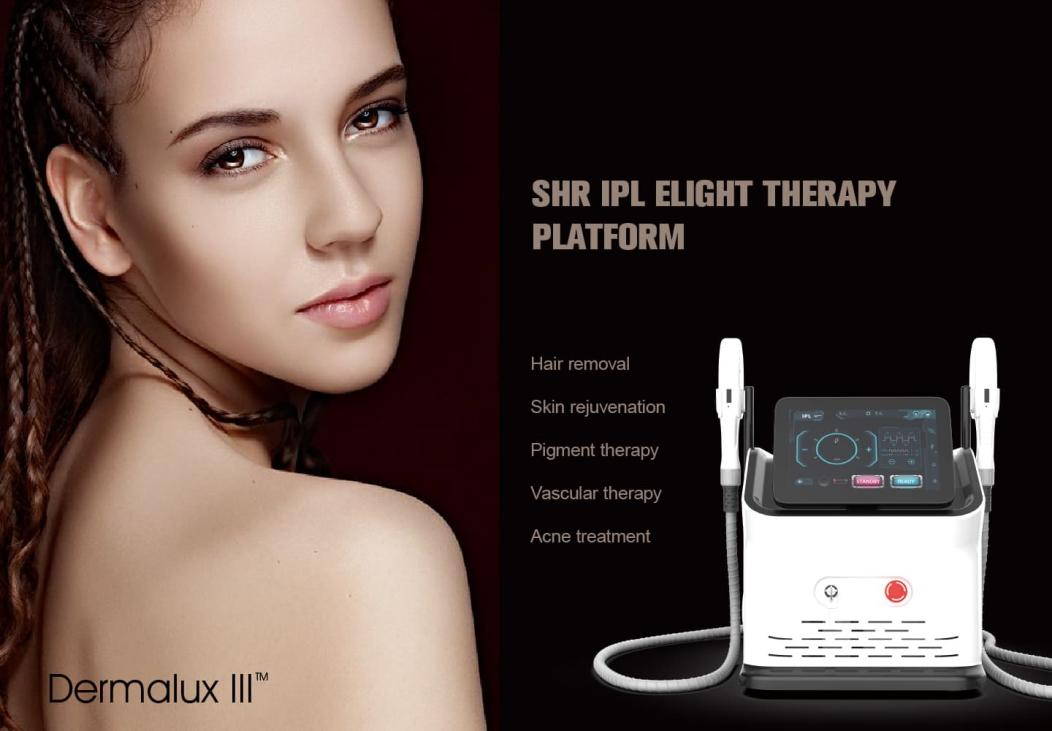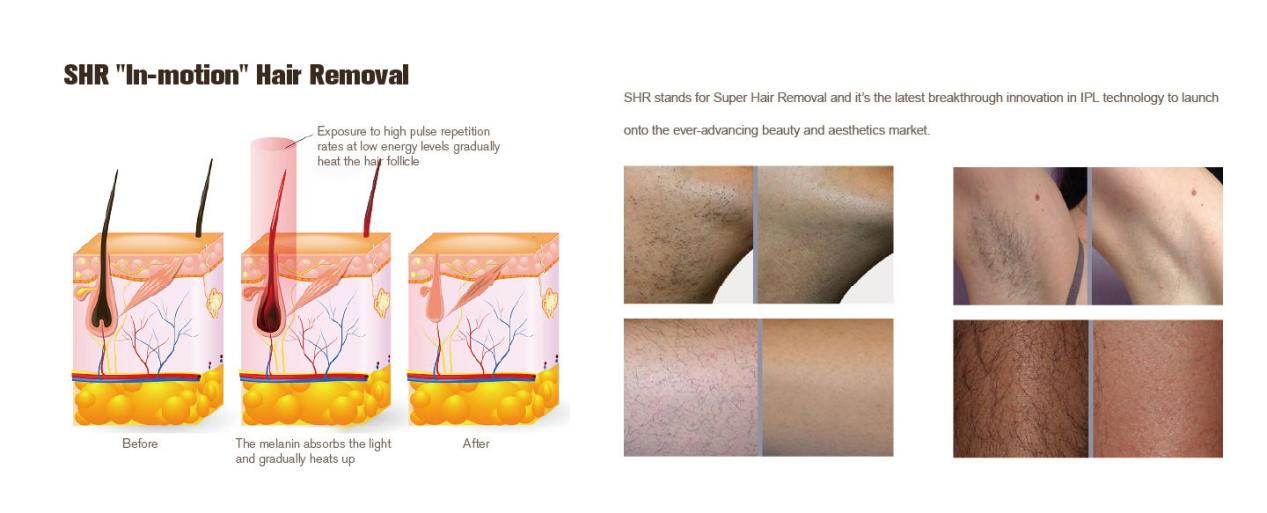
In modern skin beauty field, hair removal is a long-discussing and popular topic. Among many hair removal technologies, IPL hair removal, as a technology both suitable for home and beauty salon, is fast populated for its non-invasiveness and convenience.
However, along with its widely spreading, a core question has appeared, “does IPL hair removal really work?”. Based on photon principle, clinic effectiveness, safety and influences, I’ll make a systematic and academic analysis to provide customers a scientific decision-making reference.
1.Working Principle and Theoretical Basis of IPL Hair Removal Technology
To analyze its effectiveness, it’s necessary to know its working principle. IPL is not a kind of laser, which is a common misunderstanding.
1.1 Photothermal Selectivity and Light Energy Conversion
The core principle of IPL hair removal is the theory of selective photothermal action. This theory suggests that specific wavelengths of light energy are preferentially absorbed by target chromophores in the skin (in this case, melanin in hair follicles) and converted into thermal energy.
When the melanin in the hair follicle absorbs the broad-spectrum light emitted by IPL, the temperature rises sharply, precisely destroying the hair follicle tissue, especially the regenerative papilla and hair follicle stem cells, inhibiting or delaying hair regeneration, while the surrounding tissue is minimally affected due to the lack of a large amount of melanin.
1.2 Differences Between IPL and Laser: Multi-wavelengths VS. Single-wavelength

Although the principles are similar, there are key differences in the technical implementation between IPL and laser hair removal. Laser is a pure color light with a single wavelength and coherence, with concentrated energy, consistent penetration depth, and strong targeting. IPL is a non coherent broadband light with a wavelength range typically between 500nm and 1200nm, covering absorption peaks of various color bases such as melanin and hemoglobin.
By using different filters, short wavelength light that is ineffective for hair removal can be filtered out, and suitable bands for target tissue absorption can be selected. This makes IPL devices more versatile, but their energy density is typically lower than that of medical grade laser devices.
2.Efficacy Validation: Analysis of Clinical Evidence and Real Outcomes
Theory needs to be verified by practices. The efficacy of IPL hair removal has been evaluated in many studies.
2.1 Efficacy Rate in Clinical Studies
Multiple academic clinical studies have shown that after a complete course of treatment (usually 6-8 times, with an interval of 3-6 weeks), IPL can significantly reduce hair density, diameter, and growth rate, with an average long-term hair reduction rate of 70% to 90%. The effect is not permanent hair removal, but more accurately described as permanent hair reduction, which means that the hair remains sparse and slowly regenerating for a long time after treatment.
2.2 Key Variables Affecting Efficacy
- The efficacy of IPL is not absolute, it is significantly influenced by a series of factors, which explains why there are differences in user experience.
Fitzpatrick skin classification and hair color: The ideal user is individuals with light skin (I-III types) and dark coarse and hard hair. The greater the color difference of the skin, the more light energy the hair follicles absorb, and the lower the risk of damage to the surrounding skin. For gold, red, gray, or white hair, IPL is generally ineffective due to a lack of sufficient melanin. - Treatment parameters and operational standardization: The setting of parameters such as energy density, pulse width, and pulse delay must be personalized according to individual skin type and hair condition. Low energy is ineffective, while high energy can easily cause burns. This is also one of the main reasons for the difference in effectiveness between professional medical procedures and household equipment.
- Treatment cycle and individual physiology: Hair growth has periodicity (growth phase, regression phase, resting phase), and IPL is only effective for hair in the growth phase. Therefore, multiple treatments must be carried out to capture all hair follicles entering the growth phase and achieve cumulative effects. Individual hormone levels (such as polycystic ovary syndrome) can also affect the final regeneration of hair.
3.Safety and Side Effects: Take the Risks Rationally
Any light therapy technique carries potential risks, and IPL is no exception.
3.1 Common Short-time Adverse Reactions
There may be a slight stinging sensation during the treatment process, and temporary erythema and perifollicular edema after treatment are normal reactions that usually subside within a few hours. Improper handling may cause blisters, scabs, pigmentation (darkening), or depigmentation (whitening), but these are usually temporary.
3.2 Contraindications and Long-term Risks
Pregnant women, patients with photosensitive diseases, those who have recently tanned, those with a history of keloids, and those who are currently taking certain photosensitive drugs should avoid using IPL. Improper operation, such as excessive energy or short treatment intervals, poses a risk of burns and permanent pigment abnormalities. Therefore, both professional institutions and households must strictly follow the operating guidelines.
4.Comparison of Home and In-clinic IPL Equipment
4.1 Differences in Energy Level
The maximum energy density of FDA approved home IPL devices is limited to a safe range, typically much lower than that of professional equipment in theaters. This means that the single dose efficacy at home is milder and requires more long-term persistence to see significant results, but its safety and convenience are higher.
4.2 Technology Design and User Experience
Home devices are designed with greater emphasis on safety, such as equipped with skin color sensors that only emit light when a suitable skin color is detected. However, its treatment head is usually small, and dealing with large areas (such as legs) takes a long time, which is a test of user compliance.
5.Scientific Decision-making, Rational Beauty
Returning to the original question: “Is IPL hair removal really effective?” The answer is yes, but with important premises. Therefore, choosing the appropriate machine will greatly improve the treatment effect.
Nubway’s IPL device combines five major advantages: using 10Hz high-frequency fast sliding technology for fast and efficient operation. Equipped with a sapphire contact cooling system, the entire process is comfortable and safe, avoiding skin damage.
Low energy and high-density output can accurately act on the deep layers of hair follicles, efficiently absorbing energy without damaging the epidermis, suitable for various skin types and hair. Equipped with dual modes of stamping and sliding, the operation is flexible and convenient, and can be freely selected according to different parts.
More integrated with multiple functions such as hair removal, skin rejuvenation, acne removal, anti-aging, etc., providing comprehensive solutions for skin problems.
6.Final Suggestions to Customers
Assess your own conditions: First, determine whether your skin type and hair color are suitable for IPL.
Set reasonable expectations: Understand the concept of permanent reduction rather than permanent elimination, and accept the fact that multiple, long-term treatments are needed.
Balancing options: If pursuing efficiency, speed, and sufficient budget, professional medical laser hair removal may be a better choice. If privacy, convenience, and long-term costs are valued, and there is a willingness to persist, high-quality IPL devices are a viable alternative.
Safety first: Strictly follow the product manual, do sun protection and care before and after surgery. If you have any doubts, you should consult a dermatologist.





